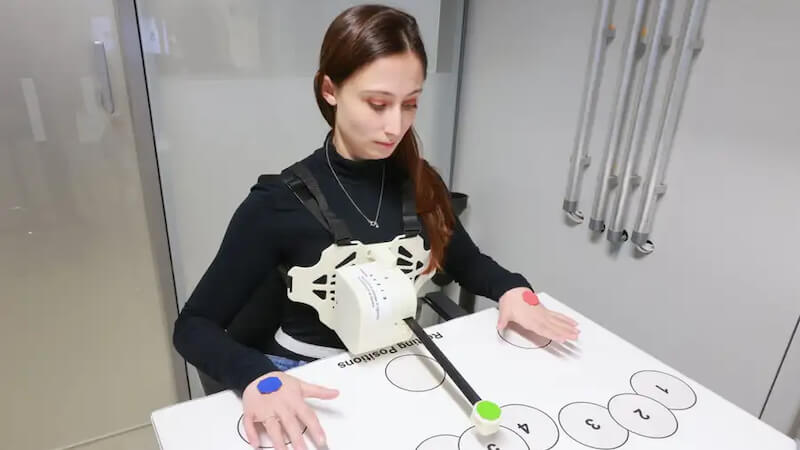
Robotics researchers recently made progress in developing prosthetics. They developed a robot arm that can be controlled by breathing.
Technology is revolutionizing many people's everyday lives. In addition to devices such as smartphones and computers that are used almost every day, researchers are also making great progress in another area: robotics. In the future, prostheses could open up unprecedented possibilities.
Researchers have made significant progress in the development of additional robotic arms (so-called XRAs), according to a study. These are intended to expand the range of human movement without impairing existing functions.
Researchers tested an additional robot arm
Giulia Dominijanni and her team from the Swiss Federal Institute of Technology Lausanne created real and virtual robot arms. The test subjects controlled them using a combination of eye movements and diaphragm contractions. In tests, 65 volunteers were able to successfully perform a range of tasks without affecting their normal breathing, speech or vision.
The challenge in developing such devices has always been creating new connections to the brain. Because these connections must be independent of the biological limbs. However, the experiments show that the human brain is able to adapt and control the devices intuitively.
Control could be via rudimentary muscles
Additionally, researchers examined arm control via rudimentary ear muscles that were used by our ancestors to rotate their ears for better hearing. These muscles could either replace or supplement the use of diaphragm control. Dominijanni sees the use of additional arms more as a question of design.
Developing ways for people to use extra limbs could help industrial workers control machines more easily. There is also potential for search and rescue forces to more quickly search through debris and provide medical assistance.
Also interesting:
Source: https://www.basicthinking.de/blog/2023/12/22/forscher-prothesen/


